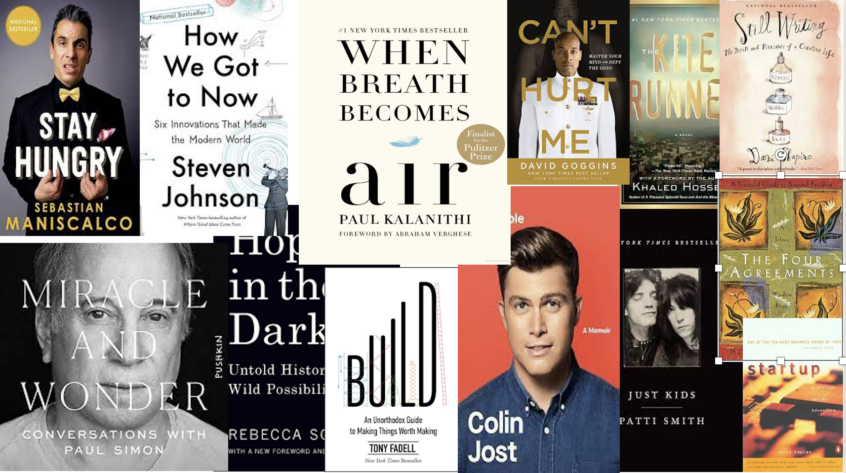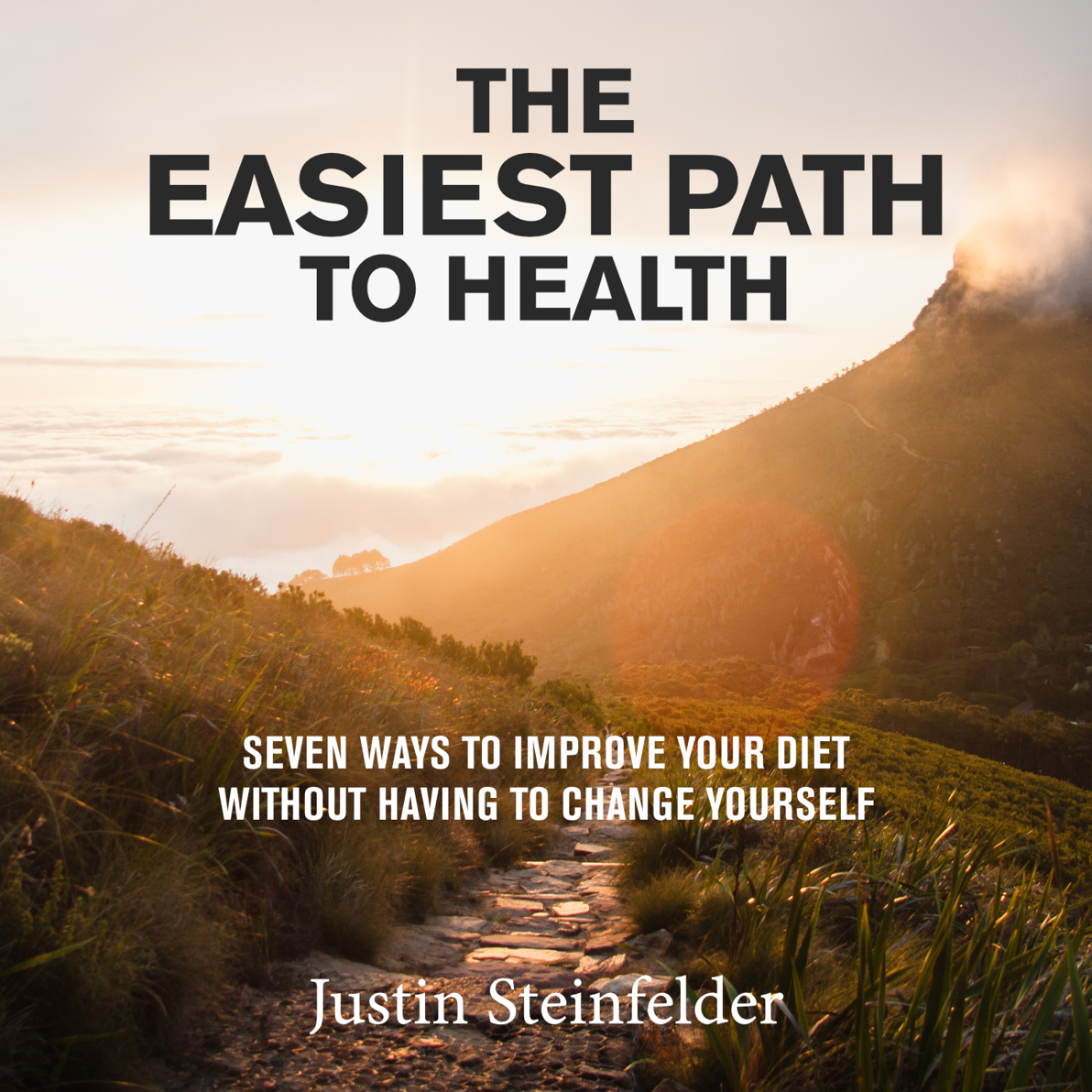A friend and reader gave me some advice this year.
(I don’t want to say his name to respect his anonymity, but it rhymes with Shark Mamalton. Coincidentally, also his porn name).
He told me he reads and likes my book posts, but–and I’m paraphrasing here– would I be able to make them any less rambling, incoherent, and, generally speaking, painful to get through? Pretty direct, right? (He’s in finance).
I thought that was a nice, specific challenge, so, after several tear-filled mornings, I tried to follow Shark’s advice, and change.
__
So how’d ol’ Justy do?
- This post is about half as long as last years (which, if you’re familiar with my long-windedness, you should realize is a feat of god).
- The insight and wisdom packed within this briefest of posts, is, humbly, off the charts
- And I’m trying a new organization technique. See if you like it.
I’ve got 13 categories here where I try to be very specific about the sort of book this is, or the sort of person who would like it, or both. Then, after each book, when I have one, I add a much shorter “Runner up,” to further clarify the category (and to, of course, add a low-key flex that I read more books than you this year).
Enjoy.
__
The List
(1) Overall Best
Paul Kalanithi, When Breathe Becomes Air
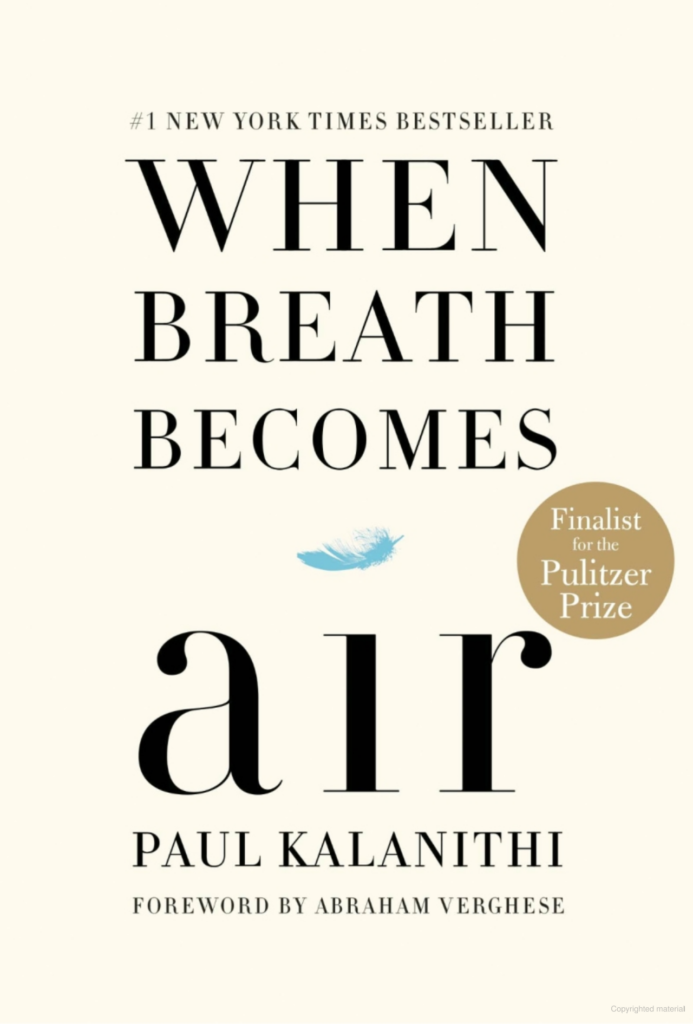
Typically, a book you “can’t put down” is a mystery or action-thriller.
It’s a Grisham or a King or a Christie. It’s Truman Capote’s In Cold Blood (on which, I write more here), or Dan Brown’s, The Da Vinci Code.
But this book is nothing like that. It’s the opposite in style, and, unlike all of the above outside of ICB, the content is true.
When Breathe Becomes Air is the sort of book that you finish beside yourself. You’re a little bit sad, yet inspired. You sense there was wisdom transferred, but that it won’t take effect for weeks, or maybe years.
It’s sort of like the way you might feel after a powerful eulogy of the person in your community that everyone looked up to. You want to talk to her, you want to know more, or just sit with her. But you can’t because she’s gone. You feel like someone has been taken from you that you never even knew.
The book is about a thoughtful, high-achieving neurosurgeon who suddenly becomes the patient when suddenly diagnosed with cancer. This memoir is about what happens in his head, to his plans, to his perspective. What suddenly changes when things change suddenly. When each breathe becomes more important— when each becomes air— he asks us, where should one spend them?
The book combines, better than any book I’ve ever read, three elements that are very hard to combine without overdoing it: insight, inspiration, and heartbreak.
“The tricky part of illness,” he wrote, “is that, as you go through it, your values are constantly changing. You try to figure out what matters to you, and then you keep figuring it out. It felt like someone had taken away my credit card and I was having to learn how to budget. You may decide you want to spend your time working as a neurosurgeon, but two months later, you may feel differently. Two months after that, you may want to learn to play the saxophone or devote yourself to the church. Death may be a one-time event, but living with terminal illness is a process.”
(2) Best Audio Experience
Malcolm Gladwell, Bruce Headlam and, Paul Simon, Miracle and Wonder: Conversations with Paul Simon
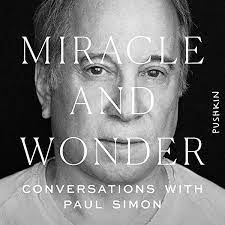
You might think that a six-hour interview with Paul Simon—even one that’s conducted by Malcolm Gladwell– would only be interesting if you’re a certified, Paul Simon nut. But not so for Miracle and Wonder. I wasn’t.
I mean, I’ve always liked Paul Simon’s music—always was moved to chills by “The Boxer,” knew all the words to “You Can Call me Al,” and just like every other teenage, liberal cream puff in the early aughts, I felt some sort of exhortation as Zach Braff and Natalie Portman were staring down the abyss, while the rain fell and “The Only Living Boy in New York,” played in the background.
I still do. (Slightly less liberal, similar amounts of cream puffery).
But I didn’t own his albums. I wouldn’t have said things like, “dude, Graceland changed my life.” If someone had asked me in 2008 or 2015 what I thought of Paul Simon, I would have probably said I like him, but not with more enthusiasm than for Gin Blossoms, or my basketball shoes.
All of which to say, yes, I only like Paul Simon. But I loved this book.
One great thing about Simon, in contrast to a lot of creatives interviewed about their work, is that he’s neither coy about the process, nor is he overly matter of fact. He really listens to the questions and thinks through how he came to create. He seems refreshingly honest, and human.
Here’s how Gladwell describes him, reflecting between one of the chapters:
“He’s the most un-rock-star rock star. Paul is surprisingly down to earth and approachable. Even if he wasn’t the most successful musician of his generation he’d be the same person.”
Add on top of all of it that you get to hear the songs, both in the context of the story of Simon’s life, and Simon playing them live. Throw in some Gladwellisms, and you’ve got yourself the audio experience of the year.
Do yourself a favor: don’t listen to this book when you’re doing other things. The dishes or cooking are for podcasts or other, less interesting, more bloated books. And, if you’re going to listen in your car, don’t listen when you’re driving through a city, and you need to pay attention to bike riders and light changes. Instead, listen when you’re on a highway. Or better yet, during a long walk in the woods.
Or, listen to it where I did, and where I’m writing this sentence right now: in a bath, a hot one. (you’re welcome for the image). I’m sweating.
(3) Best Book To Overcome Personal Limits and Excuses
David Goggins, Can’t Hurt Me (Amazon)
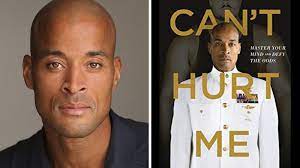
I’m nothing like David Goggins.
I’m not an extreme dude in that way (recall the liberal cream puff). And I didn’t come from a poor, broken neighborhood, overweight and with learning disabilities, and become, as he calls himself, the hardest man on the planet.
But I like to remind myself, or at least fool myself into thinking, that the limits I see are self-created. That if I change my mind, I can change what I can do, and therefore, do. To quote Macaughey—and you should read this with his spacey, southern draw—- “a roof is a man-made thing.” Green light.
A few years ago, Arnold’s Total Recall served this purpose. I was amazed to learn that Arnold worked out for two and a half hours in the morning, and another two and a half hours in the evening, six days per week for 30 years. I obviously didn’t wake up the next day and start two-a-day bodybuilding schedule, but hearing of that sort of volume changed my mind. It got me to question whether or not I could add a second 30–60-minute workout a few days per week. It got me to question my assumption: are workouts only a once-a-day sort of thing? It turns out, they aren’t.
Goggins’ story is not just about pushing physical limits once you’re in shape, but his own tough and inspiring road. Reading how he did that— actually, I listened to about half the book (Goggins is interviewed in the audio after each chapter), and I read the other half— forces you to face your own excuses, and realize, as Jocko Willinck says, “they’re lies.”
Goggins’ message isn’t really about working out, or running, or breaking records, or becoming a Navy Seal or running 100 miles races, or being a badass— it’s about breaking your own mental barriers. About being honest with where you are, getting yourself out of your own way, and learning to, compete with your mind. That, and, becoming badass.
Incidentally, I was walking the beach path in Santa Monica last week and who other than David Goggins came running, shirtless with a look on his face that could melt iron ore. And yes, he was jacked.
“I brainwashed myself into craving discomfort,” said Goggins. “If it was raining, I would go run. Whenever it started snowing, my mind would say, Get your fucking running shoes on. Sometimes I wussed out and had to deal with it at the Accountability Mirror. But facing that mirror, facing myself, motivated me to fight through uncomfortable experiences, and, as a result, I became tougher. And being tough and resilient helped me meet my goals.”
Overcome Limits, Runner Up: Wayne Dyer, How To Be a No Limit Person
Personal view alert: you should read the books your heroes read if you want to become the people they became.
Sarah Blakely is a hero of mine. Not only because I like to wear Spanx whenever I’m feeling saucey (joke), but because of the way she got to and maintains her business, the risks she took on the way, her resilience, and her commitment to her values. Also, the billion dollars doesn’t hurt (not a joke).
(She has a great Masterclass, btw).
When Blakely was young and struggling to figure her life out (selling fax machines, I believe), she listened to this Wayne Dyer audiobook on repeat (it was the last thing her dad gave to her before he left their young family). Eventually, she started believing in what Dyer was saying—and by extension, believing in herself. This book saved her, she said.
Get the audio. It’s a series of Dyer lectures. It’s a lot of good reminders on where to direct your focus, how to define situations as they arise, and that sort of thing. An ex-award-winning teacher, he’s also just enjoyable to listen to, funny, charismatic, and practical. It came before his big push into spiritualism, so it’s mostly practical.
Also, for writers, another quick audio book: Steven Pressfield’s, Put Your Ass Where Your Heart Wants to Be was pretty good. Classic Pressfield.
(4) Best Classic Self Help Book
Don Miguel Ruiz, The Four Agreements (Amazon)

It’s very easy to hate on self-help. Very easy.
Academics do it by saying there’s no science behind it. Ambitious people do it by saying, “what has this person ever done besides write self-help?” Fact-finders do it by trying to prove, for example, the story in Think And Grow Rich is made-up, or that if you look at the companies in Built to Last years later, many of them have failed, so what does this guru really know?
In fairness, self-help books, with their often outrageous claims, or flowery, floaty, otherworldly language, sort of bring it on themselves. Elizabeth Gilbert’s Big Magic is as good of a book on creativity and artistry as I’ve ever read, but some of her language might turn others off. For example, she says that ideas are “disembodied, energetic, lifeforms.” But, are they though, Liz?
But on then other hand— they do seem to have a pretty tight track record. You know may know about Oprah’s love for self-help, but how about Ray Dalio — a numbers and logic guy— listening to Tony Robbins in his driveway as his business was hanging on by a thread. Or Sara Blakely (already mentioned) listening to Wayne Dyer as she was selling fax machines door to door, or Denzel Washington listening to Les Brown, or any number of other examples.
Will listening to The Four Agreements guarantee you a billion dollar pany hose company, or win you an academy award? Obviously not. (But it doesn’t mean you can’t wear the hose).
But, just like every other self-help book—or maybe just every other book—it only helps if you think it will help.
What The Four Agreements does so well, is what the best self-help books do: they simplify, they inspire, and— if they are great—they change one’s perspective.
The way that David Schwartz can get you to think of a bigger future, or how John Kabat Zinn can get you to see a smaller present. The way that Tim Ferriss can get you to think about time, or Steve Harvey about persistence, or Emerson about learning, or Kevin Hart about hustle. That’s what Don Miguel Ruiz does—but he does it for something else. I’d call it integrity. Maybe he’d call it character.
Though the introduction is somewhat mystical, the agreements are straightforward, character-building virtues. They’re simple, elegant sentences:
(1) Be Impeccable with your word,
(2) don’t take anything personally,
(3) don’t make assumptions,
(4) always try your best.
But it’s the discussion that’s profound.
“Just do your best — in any circumstance in your life. It doesn’t matter if you are sick or tired, if you always do your best there is no way you can judge yourself. And if you don’t judge yourself there is no way you are going to suffer from guilt, blame, and self-punishment. By always doing your best, you will break a big spell that you have been under.”
Classic Self-help, Runner up: Jordan Peterson, 12 Rules of Life
Peterson is a smart guy, and this is a good book— no doubt. But I did I have some issues with it.
First, I think it would have been much better at half the length. I don’t say that just because it was long in pages—I’ve loved many long books. It just got dense, wordy, and overly-involved in some areas.
Second, I think Peterson tends to make points that are untethered to his lessons, or even reality, just to make them provocative. It’s a weird art, he has.
Having said that, I was inspired, I learned, and I liked it a lot. I saw a lot of value —particularly in Rule 2: Treat yourself like someone you’re responsible for helping, or Rule 6: Set your house in perfect order before you criticize the world, or Rule 7: Pursue what is meaningful, not what is expedient.
I think the whole thing is worth reading for those few chapters and the conclusion, which was very strong.
““Don’t underestimate the power of vision and direction. These are irresistible forces, able to transform what might appear to be unconquerable obstacles into traversable pathways and expanding opportunities. Strengthen the individual. Start with yourself.”
Two other strong self-help books:
These books have a similar vibe, btw. Their thesis is simple: focus only on what matters. What they can’t help you with, of course, is: figuring out what matters.
(i) Greg Mckeown, Essentialism: “You cannot overestimate the unimportance of practically everything.”
(ii) Oliver Burkeman, Four Thousand Weeks: Time Management for Mortals: “In an age of instrumentalization, the hobbyist is a subversive: he insists that some things are worth doing for themselves alone, despite offering no payoffs in terms of productivity or profit.”
(5) Best Book for Writing or Creating
Dani Shapiro, Still Writing (Amazon)
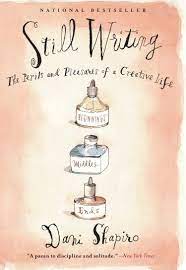
I’ve always found that when trying to improve at anything— if it’s writing, or playing a sport, or eating healthy, or traveling— that the doing of the thing is always better if I am also reading about it.
It’s not necessarily true that I perform better—at least not in the short-term— but that I understand it better, or that, at the very least, I enjoy doing it more. It’s more interesting, more fun, more engaging. And for that reason, I’m almost always reading a book about writing or some creative pursuit.
But most of those books are not as good as Shapiro’s.
You have the sense from Shapiro, a writing professor and best-selling memoirist, that she really cares. It’s a book that’s comforting to listen to, very encouraging, very much like a teacher would write. You want to write after this book, and even during it. Actually, you feel that you owe good writing. To her, and to yourself.
I also like Shapiro’s ability to get you (and herself) to just focus on making:
“Don’t think too much. There’ll be time to think later. Analysis won’t help. You’re chiseling now. You’re passing your hands over the wood. Now the page is no longer blank. There’s something there. It isn’t your business yet to know whether it’s going to be prize-worthy someday, or whether it will gather dust in a drawer. Now you’ve carved the tree. You’ve chiseled the marbled. You’ve begun.”
In the pantheon of books on writing, has Shapiro cracked the top five? Probably not.
Mine currently are: King’s, On Writing, Dillard’s, The Writing Life, Lamott’s, Bird by Bird, Murakami’s, What I Talk About, and Zinsser’s On Writing Well. But she could make a run at the top 10, somewhere between Draft No 5 and Hemingway on Writing.
For writers, Runner up : Colum McCann, Letters to a Young Writer
“Stories matter,” McAnn writes. “They send our kids to war. They open up our pockets. They break our hearts.”
In a sense, this book ended up being exactly as the subtitle suggested: it was a book about writing, but really, it was a philosophical piece on life. It was also quite poetic, the sort of book you could listen to while walking in the hills at twilight, or down an empty coastline during an overcast day. It’s meditative.
“A writer is an explorer. She knows she wants to get somewhere, but she doesn’t know if the somewhere even exists yet. It is still to be created. A Galápagos of the imagination. A whole new theory of who we are.”
(6) Best Book For a Comedian (Or people that really like Sebastian):
Sebastian Mansicalco, Stay Hungry (Amazon)
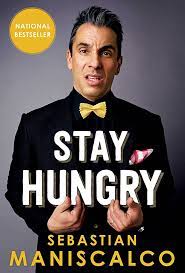
\
I underestimated Sebastian Maniscalco.
I saw him maybe 7-8 years ago in Baltimore, and chalked him up as one of these Dane Cook sort of guys— very physical, funny, but not strong enough material-wise to be one of the greats. I’m starting to reconsider that.
I saw him again recently at The Comedy Store. When I tell you that what he was doing on stage and what the other eight or nine comedians were doing on stage was of a completely different kind, I am not exaggerating. Maniscalco could be funnier than most comedians just with his eyes. Subtle movements of his face. A smirk, an eye roll. It all works.
That was all before I read this book. After reading it, I don’t just like his standup, I like his entire approach, I like the sort of person he seems to be. He’s the full package.
This book was certainly funny, but it was not quite as funny as Jost’s and I think that was sort of on purpose. It was very sincere, very comfortable with itself.
I listened to the audio— Maniscalco reads it, so you sort of have to. Here are three things I learned that I liked:
- Maniscalco became a comedian with the dream, not of being the best of all time, but with doing comedy for a living—with no backup plan. He just wanted to do it, the sort of person who would say, not “I do this” and certainly not “I have to do this,” but, “I get to do this.”
- He took a comedy class to start. Many comedians, including Seinfeld and Harvey think you can’t get much out of a comedy class. Maniscalco disagrees. So does Anthony Jeselnik. So do I.
- He’s not a partier, never really gets sucked into the comedy bar life. It’s nice to see that while that’s an easy trap to fall into, it’s not necessary to be great.
__
At the end of last year, I did a lot of standup.
It’s something I want to pursue in the future, so (just like Maniscalco), I took a class to start thinking about it, read a bunch of books about standup (these three + Jost, Martin Short’s were part of that), and did about 12-15 open mics over the course of a couple months.
[Here’s me in the class show, btw. Not exactly Sebastian quality, but it was fun, and not a complete train wreck].A couple more books I liked:
For comedians, Runner up (tactical): The Comedy Bible, Judy Carter
A comedian friend, Jeremy, told me about this book. The “formula” she breaks down for a joke— or rather, the elements involved— were very helpful in me getting my jokes to where they were good enough on stage.
For comedians, Runner up (inspirational): Sick in The Head, Judd Apatow.
This is a book of interviews with comedians that Apatow started when he was a teenager (the interviews, not the book), and continued into his career.
My obvious favorite was Seinfeld. “Jerry: If you always want less, in words as well as things, you’ll do well as a writer.”
My surprise favorite interview was with Harold Ramis, who wrote Animal House, Caddyshack, Groundhog’s Day, and was Egon from Ghostbusters. He might be the GOAT.
(7) Best How-To Business Book:
Tony Fadell, Build: An Unorthodox Guide to Making Things Worth Making (Amazon)

My friend Krista told me about this one. I saw her reading it in a coffee shop we both frequent and she already had tons of notes. I bought it immediately.
Build is part background story on its author— Tony Fadell, the founder of Nest. Fadell also worked at Apple and led the iPod team, as well as at a little-remembered company called General Magic (a great documentary about it here).
Build is about the lessons he’s learned working at start ups and starting his own.
“That’s another thing I learned from Steve Jobs. He’d always say that analogies give customers superpowers. A great analogy allows a customer to instantly grasp a difficult feature and then describe that feature to others. That’s why “1,000 songs in your pocket” was so powerful.”
“When they fall apart it’s usually for one of three reasons: You focus on making one amazing thing but forget that it has to be part of a single, fluid experience. So you ignore the million little details that aren’t as exciting to build, and end up with a neat little demo that doesn’t actually fit into anyone’s life. Conversely, you start with a disruptive vision but set it aside because the technology is too difficult or too costly or doesn’t work well enough. So you execute beautifully on everything else but the one thing that would have differentiated your product withers away. Or you change too many things too fast and regular people can’t recognize or understand what you’ve made. That’s one of the (many) issues that befell Google Glass. The look, the technology—it was all so new that people had no idea what to do with it. There was no intuitive understanding of what the thing was for. It’s as if Tesla decided out the gate to build electric cars with five wheels and two steering wheels. You can change the motor, change the dash—but it still has to look like a car. You can’t push people too far outside their mental model. Not at first.”
How-to Business, Runner Up: Art of The Start, Guy Kawasaki.
Kawasaki also was a pivotal employee for Apple, as well as an entrepreneur and investor. He’s straightforward, opinionated, enthusiastic, and light-hearted. I didn’t always agree, but I was always interested. Very solid book.
“The next time you think that there’s something that you “can’t live without”, wait for a week and then see if you’re still alive or not”
(8) Best Business Biography:
Jerry Kaplan, Start Up: A Silicon Valley Story (Amazon)
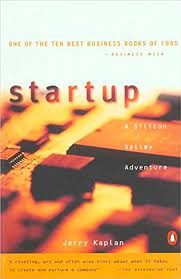
Start Up is one of the best business bios I’ve ever read, for two reasons.
First, it’s written by the founder himself. Kaplan is a guy that was part of the mobile tech revolution. In the late 80s, Kaplan founded GO Corporation a decade before the Palm Pilot or Blackberry, and 20 years before the iPhone release in 2007. So he really came of age in the pioneering stages of what nearly 40 years later seems ordinary.
The second reason this book is good is because Kaplan is good. It reads like a novel, and if you’re specifically into business and startupy stuff, it’s doubly fun. He’s insightful, tells a story, gives just the right amount of tech detail for you to understand what’s going on, but not so much as to bore or overwhelm.
“This incongruous assortment of engineers, reminiscent of the diverse characters of a Passion play, had one thing that bound them together: a deep, almost spiritual conviction that a good ideas and some hard work can make a difference. They believed in the power of a concept to change people’s lives for the better, and felt a moral imperative to make it happen. GO was a vehicle for each of them to put this feeling into action, to prove to themselves that their faith was justified. Perhaps, in the end, this will be the startup game’s most valuable contribution: to rekindle a sense of purpose, a sense of empowerment in a Big Brother world.”
Biz Bio, Runner up: The Founders, Jimmy Soni
Two of the most interesting books I’ve read in the last 10 years have been based on or by Peter Thiel (Zero to One) and Elon Musk (Elon Musk)— this book is essentially a mini biography on each of them, with the bonus of a Levchin bio (just as impressive and interesting), and origin story of one of the most impactful businesses in the last 20 years.
The story of PayPal— the founding by Levchin and Thiel, the hostile merging with X.com, the fight against and eventual sale to eBay— is even more interesting in light of what it produced. In addition to revolutionizing payment, it spawned a group of misfits, known as the “PayPal Mafia,” many of whom went on to start their own billion dollar businesses. Reid Hoffman (LinkedIn), Jeremy Stoppelman (Yelp!), David Sacks (Yammer), Steve Chen, Jawed Karim, and Chad Hurley (Youtube), to name a few.
It gets sort of slow in the 3rd quarter of the book, but the fist 50% and ending is phenomenal.
“When dealing with hairballs (undesirable frustrations that seemingly linger longer than you want), stay the course. Hairballs could lead to unexpected strengths down the road.”
“We had to hire our friends,” Soni quotes David Sacks, “because nobody else would work for us.”
(9) Best book if smiling is your favorite
Colin Jost, A Very Punchable Face: A Memoir (Amazon)
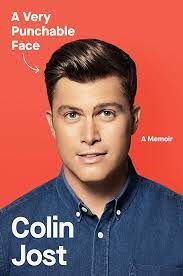
I read a lot of funny books this year.
Maniscalco was one, Martin Short’s I Must Say was another, but I think Jost’s was the most consistently funny for the entire book. I’m talking about laughing-out-loud-while-sitting-alone-in-public-places-with-people-looking-at-me-strange funny.
For comparison, another book that did that for the first few chapters was Matthew Perry’s book. The first chapter or two of that book is about as funny as one can write. But Jost’s was funnier for longer, and had some additional benefits.
Jost combined his comedy and personal story with insight.
“No one in comedy (or any field, really) succeeds in a vacuum, Jost said,” speaking about his rise in standup and into SNL. “And the faster you find friends who challenge you and sometimes make you jealous, the faster you’ll grow as a comedian (and regress as a human).”
The longest tenured head-writer of the most successful network sketch comedy show of all time (SNL), that insight is earned.
He’d tell his story—his upbringing in a very religious context, for instance—and then get to insight and joke.
“The religious kids were really religious, the kind who push religion on others in a way that always freaks me out. They are like people who keep telling me, ‘You have to see Hamilton!’ Honestly, no I don’t and the more you keep telling me, the less likely I am to actually see it. Though I have subsequently seen, “Hamilton” and it’s excellent.”
For smiling, runner Up: Martin Short, I Must Say.
It feels little disrespectful to place this book below Jost’s. I mean, we’re talking about a legend in Short and, no offense, a really good writer and comedian in Jost.
I thought Short’s book was really good, sincere, funny, and inspiring. It was maybe a half-step below Steve Martin’s book, Born Standing Up. Short also reads the audio.
“As I write this, I am sixty-four years old, with, I hope, many more years to live and lots more to do. And, by the way, no face work. I know you’re thinking, “No kidding.” But cosmetic surgery just doesn’t work on a man. Were I to take the plunge, no one would ever say, “Whoa, who’s that really hot thirty-eight-year-old dude?” They’d say, “Who’s that sixty-four-year-old who’s been in a fire?”
(10) Best Novel
Khaled Hosseini, The Kite Runner (Amazon)
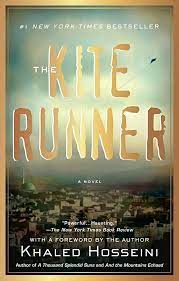
“There are a lot of children in Afghanistan, but little childhood.”
I read this book trying to figure out why it had such a grip on me. I have some ideas.
My first idea is that the narrator (who, one gets the sense, is very similar to Hosseini, if not him exactly), has a big flaw. He’s sort of a coward in the worst way, and there’s something attractive about his vulnerability; about him divulging this secret to us, even while he struggles to overcome it.
It’s also easy to understand his relationship to his father (a mix of fear, desire to impress, and appreciative love), to his childhood friend (envy, shame), to his mentor, and to his eventual love interest. And all of this, it seems, is heightened against the backdrop of a culture foreign to many in the west, certainly me.
Whatever is the magic of this book, it would be hard to imagine someone not being grabbed by it. Which is probably why it sold, like, a zillion copies.
“I want to tear myself from this place, from this reality, rise up like a cloud and float away, melt into this humid summer night and dissolve somewhere far, over the hills. But I am here, my legs blocks of concrete, my lungs empty of air, my throat burning. There will be no floating away.”
Best novel, runner up: Herman Hesse, Siddarrtha
This is a good book and Hesse is obviously a good, smart writer (he later won the Nobel prize in literature).
My primary issue is that, though the story is interesting, the “teachings” from it seem unoriginally eastern-driven. You run into things like “there is no knowledge, only learning” or some quote like that (I made that one up) and, is it just me, or do you just say to yourself—ok, well what the fuck does that mean, Herman?
“Wisdom cannot be imparted… Knowledge can be communicated, but not wisdom. One can find it, live it, do wonders through it, but one cannot communicate and teach it.”
Zero. Wisdom. Sir. Great, thanks, Herm.
Having said all that— I liked it.
(11) Best Serious Memoir or Biography
Patti Smith, Just Kids (Amazon)
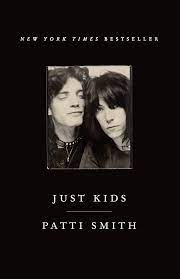
“The artist seeks contact with his intuitive sense of the gods, but in order to create his work, he cannot stay in this seductive and incorporeal realm. He must return to the material world in order to do his work. It’s the artist’s responsibility to balance mystical communication and the labor of creation.”
Smith is a poet, so the writing is flow-heavy, artful, and visceral. It’s also flat out good—you don’t win the National Book Award with anything less.
The fun of the book is living through a coming of age couple—Smith and her boyfriend Robert, also an artist—in late 1960s and 70s New York, where the art scene was full of Andy Warhols and Bob Dylans; there was Dylan Thomas and Allen Ginsberg and Thomas Wolfe and Edie Sedgewick, and oh, look, Jimmy Hendricks just walked in the room. Throughout the book, Smith interreacts with, or befriends, many of these giants of creative history, making her feel sort of like the artistic Forrest Gump of Greenwich Village.
But the craziest thing to me—the part I found inspiring— was that Patti didn’t know she was going to be a musician until very late into doing her art. She took baby steps, first with pictures, then with words and poetry. Then poetry readings, some acting and theatre thrown in. Then doing poetry reading with some music accompaniment. And then, way after, in the distance, it occurred to her that maybe they could start a rock band.
You look at the finished product, assume you have a pretty good idea how she got there. But you don’t suspect how much longer it took, than you thought, or how meandering and mistake-ridden and lucky.
Patti’s is an insane path for someone known as one of the great singer-songwriters. Think of the others in that category— Dylan, Taylor, Mitchell— these people breathed guitar and music as young kids. Patti Smith didn’t consider herself a musician until she was almost 30.
“I had no proof that I had the stuff to be an artist,” she wrote, “though I hungered to be one.”
I read M Train, her second memoir, in 2017. I really liked it. I liked this one in a slightly different way. It was the difference between an artist forming (this book) versus the life of one (M Train). Both excellent.
Best serious bio, runner up: Michael Lewis, The Undoing Project
“We study natural stupidity instead of artificial intelligence.”
Thinking Fast and Slow is one of the books I think that everyone should have to read. It should be added to curricula in high school and then also in college.
This book is the story behind that book. About the two genius-level authors who wrote it, and their polar opposite approaches to life, creativity, and work.
Through in the great, clear, light writing of Michael Lewis, and you’ve got a great story. And, as in any Lewis book, the quotes abound:
“The way the creative process works is that you first say something, and later, sometimes years later, you understand what you said.”
“The secret to doing good research is always to be a little underemployed. You waste years by not being able to waste hours”
(12) Best Serious Essay-Like Non-Fiction
Rebecca Solnit, Hope in the Dark (Amazon)

I think I was led to Solnit by Maria Popova, founder of themarginalian.org. (Side note: if you don’t know Maria and you like being inspired and learning, you should sign up for her newsletter. I also spoke about her great book, Figuring, in this post.).
Solnit, a contributing editor to Harpers, and an author of 18 books, writes like a philosopher had a ménage with a novelist and activist. It’s quite good.
This book, partially a reaction to the 2004 election, is about maintaining hope in the face of uncertainty.
“To hope is a gamble,” she writes. “It’s a bet on the future, on your desires, on the possibility that an open heart and uncertainty is better than gloom and safety.”
Because this subject is so broad, you don’t have to care anything at all about politics to take out value. Everyone deals in change an uncertainty. “Change,” Solnit writes, “is rarely straightforward…Even things that seem to happen suddenly arise from deep roots in the past or from long-dormant seeds.”
And elsewhere:
“Cause-and-effect assumes history marches forward, but history is not an army. It is a crab scuttling sideways, a drip of soft water wearing away stone, an earthquake breaking centuries of tension.”
(13) Best Book For Thinking, Ideas, Interest, and Wonder
Stephen Johnson, How We Got To Now (Amazon)
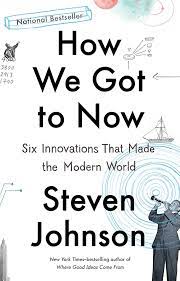
I’m a bit of a Johnson fanboy. (It took a lot for me to not make a joke here)[1].
My all-time favorite Johnson book is Where Good Ideas Come From, which I’ve read more than once to, you know, get good ideas. How We Got To Now feels similar in that its stories tell of the process by which some of the biggest, world-changing ideas came about, and it borrows a lot from the theory posed in WGICF.
A quote that explains the basic theory:
“Johannes Gutenberg’s printing press created a surge in demand for spectacles, as the new practice of reading made Europeans across the continent suddenly realize that they were farsighted; the market demand for spectacles encouraged a growing number of people to produce and experiment with lenses, which led to the invention of the microscope, which shortly thereafter enabled us to perceive that our bodies were made up of microscopic cells. You wouldn’t think that printing technology would have anything to do with the expansion of our vision down to the cellular scale, just as you wouldn’t have thought that the evolution of pollen would alter the design of a hummingbird’s wing. But that is the way change happens.”
Probably my favorite chapter was about glass, which involves the stuff above, but also involves something I didn’t expect, but now makes a lot of sense: the internet. Fiber optic cables line the ocean floor, and through them, signals of light communicate over thousands of miles. That’s how you send a WhatsApp to someone in Tokyo, and they get it instantly.
“The time travelers are usually adapt at “intercrossing” different fields of expertise. That’s the beauty of the hobbyist: it’s generally easier to mix different intellectual fields when you have a whole array of them littering your study or your garage.”
Runner Up: Neil Degrasse Tyson, Starry Messenger (Amazon)
Basically, anything that NDT puts out, I’ll read or listen to.
This book is all about how scientific thinking can help us be generally smarter as a society, using examples from diet to statistics to politics to pandemics. It’s very relevant. Plus, NDT reads it, which is especially fun.
If you read it, I suggest listening to his interview with Sam Harris on Making Sense as a companion piece. Also quite good.
___
That’s it, peeps. I’ll be back with my best all-time “pocket books” (great books under 200 pages) in a month or two.
Happy reading, and let me know what you think.
Besos,
Justy
[1] My mind goes directly to the Big Johnson t-shirts of the 90s.
